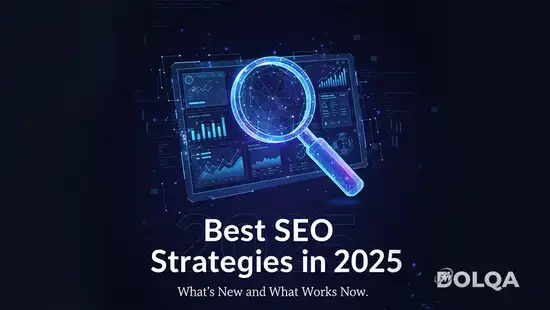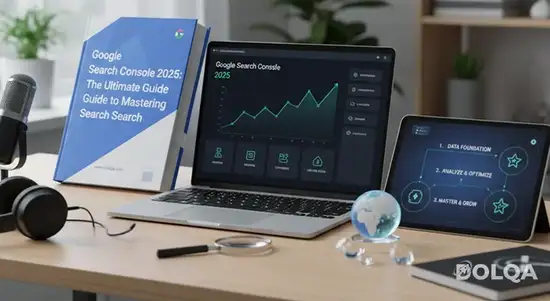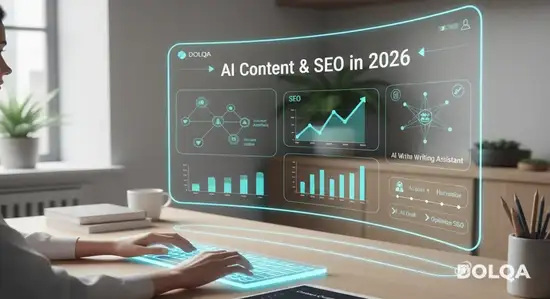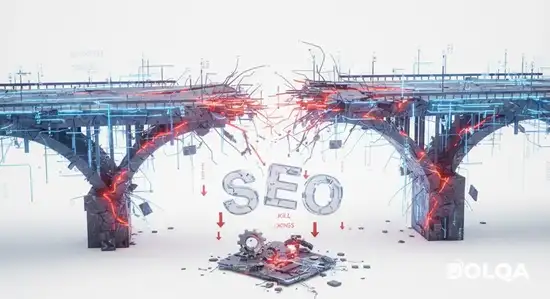Best SEO Strategies in 2025: What's New and What Works
Discover cutting-edge SEO strategies for 2025. Learn what's new in search optimization, AI integration, and proven tactics that deliver results now.
Introduction: The Evolution of Search Engine Optimization
The landscape of search engine optimization has undergone a dramatic transformation as we progress through 2025. What worked even 18 months ago has fundamentally shifted, driven by revolutionary advances in artificial intelligence, changes in user search behavior, and Google's continuous algorithm refinements. For SEO professionals and digital marketers, staying ahead of these changes isn't optional—it's essential for survival in an increasingly competitive digital ecosystem.
This comprehensive guide explores the most effective SEO strategies for 2025, examining what's new in the field of SEO and, more importantly, what's actually delivering measurable results right now. We'll dive deep into technical implementations, strategic frameworks, and actionable tactics that separate industry leaders from those struggling to maintain visibility in search results.
The Paradigm Shift: Understanding What's New in SEO 2025
AI-Driven Search Experience Optimization (SXO)

The integration of generative AI into search has fundamentally altered how users interact with search engines. Google's Search Generative Experience (SGE) and similar AI-powered features from competing platforms have created a new paradigm where traditional SERP positions matter less than being featured in AI-generated summaries and snapshots.
Key developments include:
- Zero-Click Search Dominance: Approximately 60% of searches now result in zero clicks, with users finding answers directly in AI overviews
- Entity-Based Indexing: Search engines prioritize understanding entities and their relationships over simple keyword matching
- Conversational Query Processing: Natural language processing has reached a sophistication level where search engines understand context, intent, and nuance across multi-turn conversations
E-E-A-T Evolution: The Experience Factor
Google's expansion of E-A-T (Expertise, Authoritativeness, Trustworthiness) to E-E-A-T in late 2022 has reached full maturity in 2025. The additional "E" for Experience has become a critical ranking factor, particularly for YMYL (Your Money or Your Life) content.
Demonstrating genuine first-hand experience now requires:
- Detailed case studies with specific metrics and outcomes
- Original research, data, and proprietary insights
- Author credentials prominently displayed with verifiable expertise
- User-generated content and authentic reviews
- Behind-the-scenes documentation and process transparency
Core Web Vitals 2.0: Interaction to Next Paint (INP)
March 2024 marked the transition from First Input Delay (FID) to Interaction to Next Paint (INP) as a Core Web Vital. By 2025, INP optimization has become non-negotiable for competitive rankings.
Technical requirements for INP optimization:
- JavaScript bundle size reduction below 150KB for main thread efficiency
- Long task breaking (tasks exceeding 50ms must be subdivided)
- Server-side rendering (SSR) or static site generation (SSG) for critical content
- Strategic code splitting and lazy loading implementation
- Third-party script optimization with facade patterns
Strategic Framework: Proven Strategies That Work Now
1. Semantic Search Optimization and Topic Authority
Moving beyond traditional keyword optimization, successful SEO strategies in 2025 focus on building comprehensive topic authority through semantic relationships and content depth.
Implementation approach:
- Topic Cluster Architecture: Develop pillar pages covering broad topics with 3,000+ words, supported by 15-20 cluster pages addressing specific subtopics
- Entity Optimization: Use schema markup to define entities, their attributes, and relationships within your content ecosystem
- Semantic Keyword Integration: Incorporate LSI keywords, related entities, and co-occurring terms naturally throughout content
- Knowledge Graph Alignment: Structure content to align with Google's Knowledge Graph, increasing chances of entity recognition
2. AI-Optimized Content Creation
With AI detection becoming sophisticated, the focus has shifted from avoiding AI-generated content to creating AI-optimized content that serves both human users and machine learning algorithms.
Best practices include:
- Hybrid Content Creation: Use AI for research and outlining, but maintain human expertise for analysis, insights, and unique perspectives
- Structured Data Implementation: Apply comprehensive schema markup (Article, FAQPage, HowTo, Product, etc.) to help AI systems understand content context
- Featured Snippet Optimization: Format content specifically for AI overview inclusion with concise definitions, numbered steps, and comparison tables
- Multimedia Integration: Combine text with original images, diagrams, videos, and interactive elements that AI summaries can reference
3. Technical SEO Excellence: Advanced Implementation

Technical SEO has become exponentially more complex in 2025, requiring expertise in areas traditionally outside the SEO discipline.
Critical technical elements:
Server and Infrastructure Optimization:
- Content Delivery Network (CDN) with edge computing capabilities
- HTTP/3 and QUIC protocol implementation
- Predictive prefetching based on user behavior patterns
- Progressive Web App (PWA) architecture for mobile experiences
JavaScript and Rendering Optimization:
- Hybrid rendering strategies (combining SSR, SSG, and client-side rendering)
- Critical CSS inlining with minimal blocking resources
- Web Worker implementation for computationally intensive tasks
- Streaming server-side rendering for faster Time to First Byte (TTFB)
Advanced Crawl Optimization:
- Strategic use of crawl budget through log file analysis
- Dynamic XML sitemaps with prioritization algorithms
- Intelligent use of IndexNow protocol for immediate indexing
- Render budget optimization for JavaScript-heavy sites
4. Multi-Modal Search Optimization
Visual, voice, and video search have matured significantly, requiring dedicated optimization strategies.
Visual Search Optimization:
- High-resolution, original images with descriptive filenames
- Comprehensive alt text incorporating target keywords naturally
- Image schema markup with detailed metadata
- Visual similarity optimization through related image grouping
Voice Search and Conversational AI:
- Featured snippet optimization for position zero
- Question-based content addressing specific user queries
- Local SEO optimization for "near me" searches
- Conversational keyword integration matching natural speech patterns
Video SEO Strategy:
- Video schema markup with timestamps and key moments
- Comprehensive transcriptions with keyword optimization
- Thumbnail optimization using high-contrast, engaging visuals
- YouTube and platform-specific optimization alongside website hosting
5. Authority Building Through Digital PR and Link Acquisition
Link building has evolved into sophisticated digital PR strategies that focus on earning high-authority, contextually relevant backlinks.
Modern link acquisition strategies
- Data-Driven Content Marketing: Create original research, surveys, and data studies that naturally attract citations
- Digital PR Campaigns: Develop newsworthy angles connecting your brand to trending topics and current events
- Strategic Partnerships: Collaborate with complementary brands for co-marketing initiatives and content partnerships
- Expert Contributions: Position team members as thought leaders through contributed articles, podcast appearances, and conference speaking
- Unlinked Brand Mention Recovery: Monitor brand mentions and systematically convert unlinked references into backlinks
6. Local SEO 2.0: Hyperlocal Optimization
Local search has become increasingly sophisticated, with Google providing granular location-based results even for general queries.
Advanced local SEO tactics:
- Google Business Profile Optimization: Complete every field, post updates 3-5 times weekly, and maintain sub-60-minute response times
- Local Schema Markup: Implement LocalBusiness schema with comprehensive NAP (Name, Address, Phone) information
- Geographic Content Clustering: Create location-specific landing pages with unique, valuable content for each service area
- Review Generation Systems: Implement automated review request workflows while maintaining authenticity
- Local Link Building: Acquire links from local chambers of commerce, news outlets, and community organizations
Emerging Trends Shaping SEO's Future
Privacy-First Analytics and Measurement
With the deprecation of third-party cookies and increasing privacy regulations, measurement strategies have fundamentally changed.
Adaptation strategies:
- Server-side tagging implementation for first-party data collection
- Privacy-preserving attribution models using aggregated data
- Conversion API integration with major advertising platforms
- Focus on incrementality testing over last-click attribution
Search Intent Micro-Segmentation
Understanding search intent has moved beyond the traditional informational, navigational, transactional, and commercial categories.
Modern intent analysis identifies:
- Problem awareness stage (initial research)
- Solution exploration phase (comparing approaches)
- Vendor evaluation mode (comparing specific providers)
- Implementation intent (ready to purchase)
- Post-purchase support needs (troubleshooting and optimization)
Sustainable SEO and Environmental Considerations
Digital carbon footprint has emerged as both a user concern and a potential ranking factor.
Sustainable SEO practices:
- Page weight reduction through aggressive optimization
- Green hosting provider selection
- Efficient caching strategies reducing server load
- Image format optimization (WebP, AVIF adoption)
- Minimalist design principles reducing resource consumption
Common Pitfalls to Avoid in 2025
Despite advances in SEO knowledge, many organizations continue making critical errors:
- Over-Reliance on AI Content: Publishing large volumes of thin AI-generated content without human expertise diminishes E-E-A-T signals
- Ignoring Mobile-First Indexing: Failing to optimize mobile experience despite it being the primary indexing method since 2019
- Neglecting Technical Debt: Accumulating technical SEO issues that compound over time and eventually cause ranking drops
- Keyword Stuffing 2.0: Forcing semantic keywords and LSI terms unnaturally throughout content
- Abandoning Link Building: Assuming content alone will generate rankings without strategic authority building
Measurement and Analytics: KPIs That Matter
Traditional metrics like rankings and traffic remain important but insufficient for comprehensive SEO measurement.
Critical 2025 SEO KPIs:
- AI Overview Appearance Rate: Percentage of target keywords where your content appears in AI-generated summaries
- Entity Recognition Score: Frequency of your brand being recognized as an entity in Knowledge Graph queries
- Core Web Vitals Performance: Consistent passing scores for LCP, INP, and CLS across all device types
- Topic Authority Score: Share of voice across your topic cluster ecosystem
- Conversion Path Analysis: Understanding how organic traffic converts across multi-touch attribution
- Engagement Metrics: Scroll depth, time on page, and interaction rates indicating content quality
Implementation Roadmap: Getting Started

For organizations looking to implement these strategies, a phased approach ensures systematic improvement:
Phase 1 (Months 1-2): Foundation
- Technical SEO audit and critical issue resolution
- Core Web Vitals optimization
- Schema markup implementation
- Content inventory and gap analysis
Phase 2 (Months 3-4): Content Development
- Topic cluster architecture development
- Pillar page creation with comprehensive coverage
- Supporting cluster content production
- Multimedia asset creation
Phase 3 (Months 5-6): Authority Building
- Digital PR campaign launch
- Strategic partnership development
- Link acquisition program implementation
- Local SEO enhancement (if applicable)
Phase 4 (Months 7-12): Optimization and Scaling
- Performance analysis and iteration
- A/B testing of content formats
- Emerging channel exploration
- Team training and capability building
Conclusion: Embracing Continuous Evolution
The most successful SEO strategies in 2025 share a common characteristic: they embrace continuous evolution rather than seeking permanent solutions. The integration of AI into search, the increasing sophistication of user expectations, and the constant refinement of ranking algorithms mean that static approaches inevitably fail.
What's new in the field of SEO extends far beyond algorithm updates—it encompasses fundamental shifts in how users search, how search engines process information, and how businesses must demonstrate value and expertise. The strategies outlined in this article represent the current state of the art, but they're merely a snapshot of an ever-evolving discipline.
Success in SEO 2025 requires technical excellence, strategic thinking, genuine expertise, and the agility to adapt as new developments emerge. Organizations that invest in building comprehensive topic authority, optimizing for both human users and AI systems, and maintaining technical excellence will find themselves well-positioned not just for today's search landscape, but for whatever comes next.
What SEO strategies are you implementing in 2025? Share your experiences and questions in the comments below, and let's continue the conversation about what's working in your specific industry and market.







Comments (0)
Leave a Comment
No comments yet. Be the first to comment!